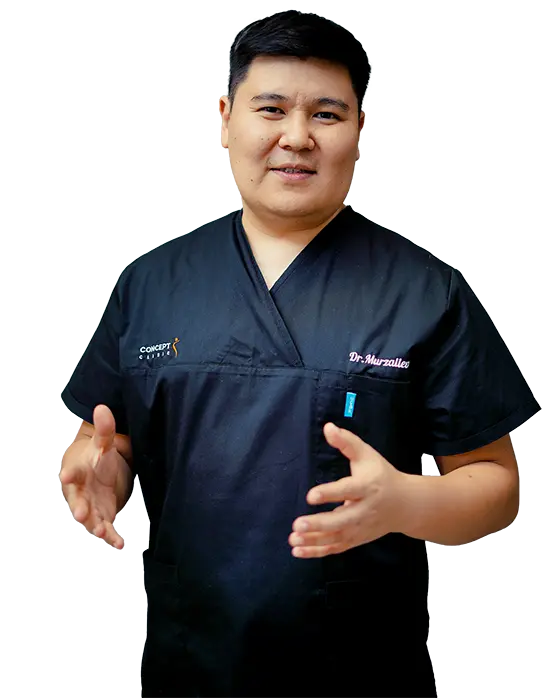Mastopexy (breast lift) — This is an operation aimed at correcting the shape of the mammary glands, eliminating ptosis, eliminating excessively stretched skin of the mammary glands, and creating elastic and toned shapes.
There are several main types of mammoplasty, which can be performed both together and separately based on the patient's requests and each specific case.
Among them, the following can be distinguished:
- Augmentation mammoplasty on implants (breast enlargement with implants)
- Mastopexy (breast lift in two variations: with size reduction and without reduction)
- Mastopexy on implants (breast lift with volume increase using implants)
What types of mastopexy are there?
There are 2 main types of lifting breasts:
- T-shaped (anchor) breast lift
- Vertical breast lift
Which technique should you choose?
To determine the choice of technique, you need to visit a plastic surgeon for an in-person consultation. An in-person consultation will allow you to more competently weigh all the "PROS" and "CONS" in each specific case and choose exactly the operation that suits you.
Indications for surgery:
- Atrophy - stretching and sagging of the mammary glands after breastfeeding.
- Ptosis - drooping of the breast, typical for older women.
- Cosmetic defects after removal of a cancerous tumor in the breast.
- Macromastia - excessively large breast size.
- Insufficient breast volume in combination with the presence of stretched skin or drooping gland.
Contraindications to surgery:
- diabetes mellitus
- diseases of the lungs, liver, kidneys, cardiovascular system in the decompensation stage
- pregnancy (current or planned in the near future)
- breastfeeding and lactation period (at least 6 months must pass after the end of lactation)
- acute infectious diseases
- blood clotting disorder
- chronic diseases (exacerbation)
- age under 18 years
- mental disorders
- oncology
- systemic autoimmune diseases of the connective tissue tissue.
The course of the operation and the postoperative period
The operation lasts from one and a half to two hours, is performed under general anesthesia. During the operation, a flap of the mammary gland is formed for the purpose of its subsequent movement and fixation. The incision during a T-shaped breast lift is like an "anchor" (around the areolas, vertically along the midline of the gland and horizontally along the submammary fold). In the case of vertical mastopexy, the incision is made around the areolas and vertically along the midline of the mammary gland. If necessary, breast implants can be installed during a T-shaped mastopexy.
Pain syndrome is usually not expressed after mastopexy, but there may be discomfort when straining the chest muscles after mastopexy on implants.
For 2 months after the operation, the patient will need to wear compression underwear around the clock. For about a month after the operation, it is not recommended to perform active movements of the hands; for about two months after the operation, you will need to limit physical activity and visits to saunas and steam rooms.

